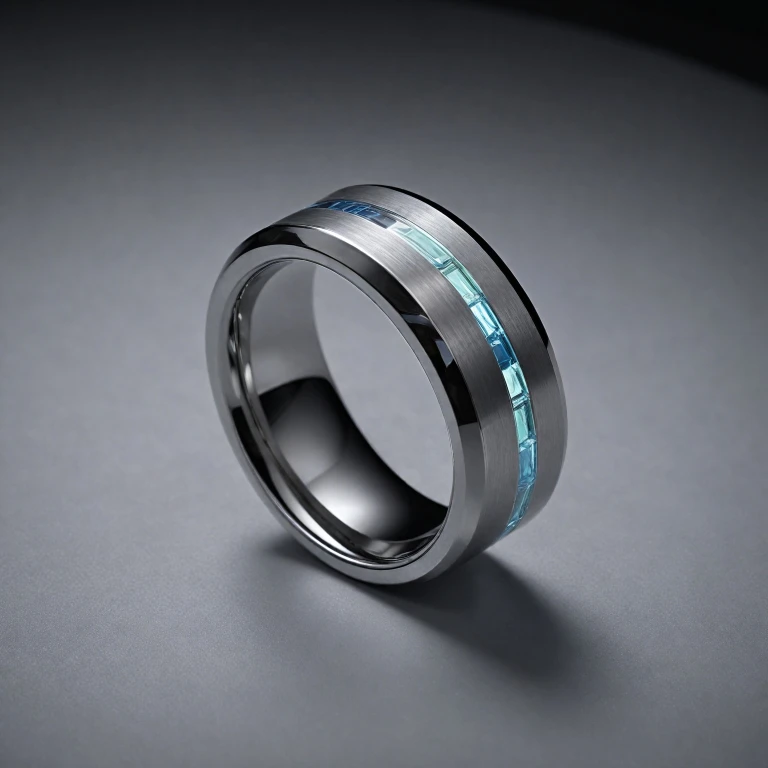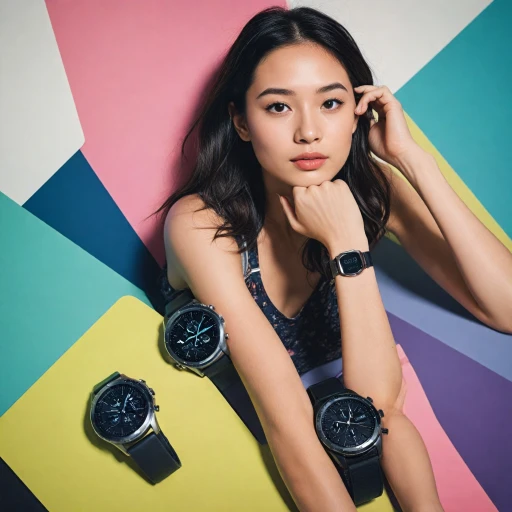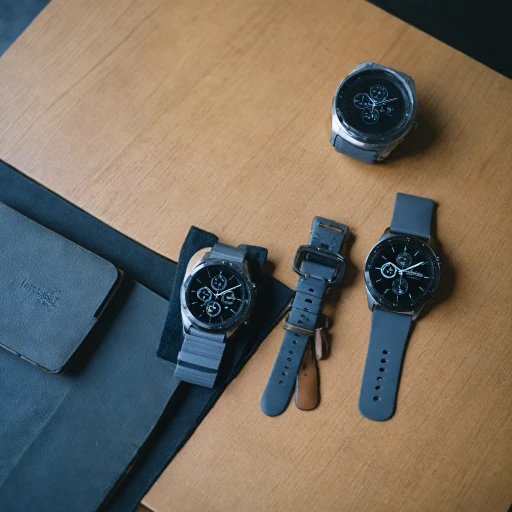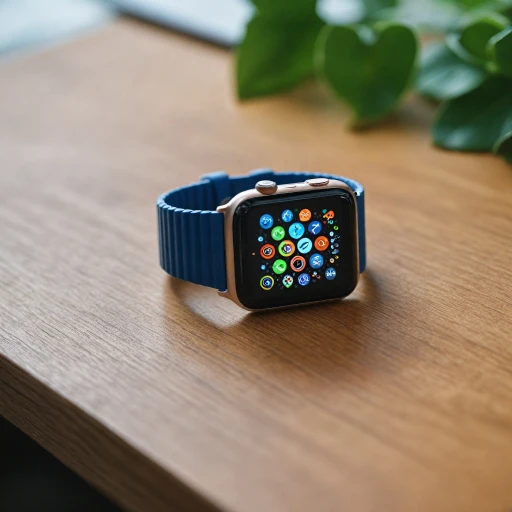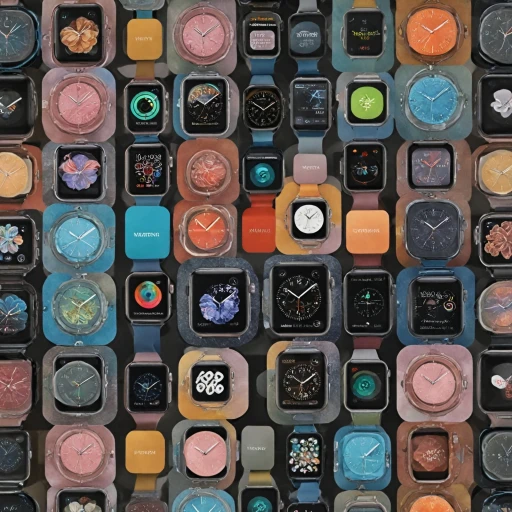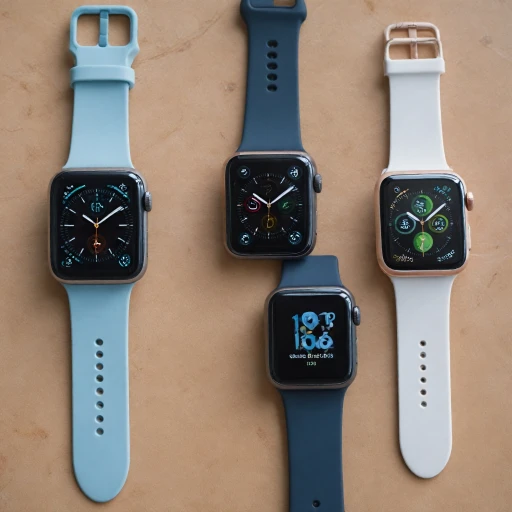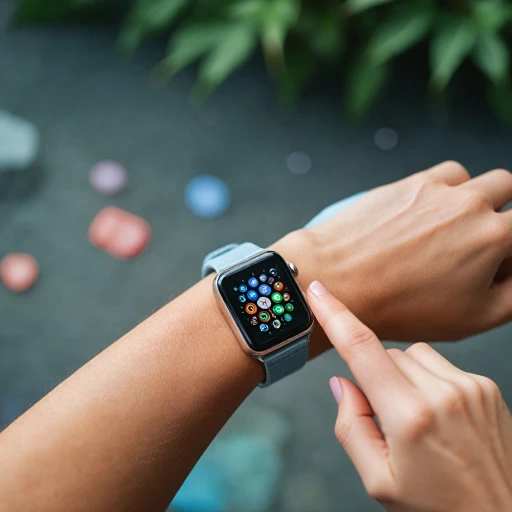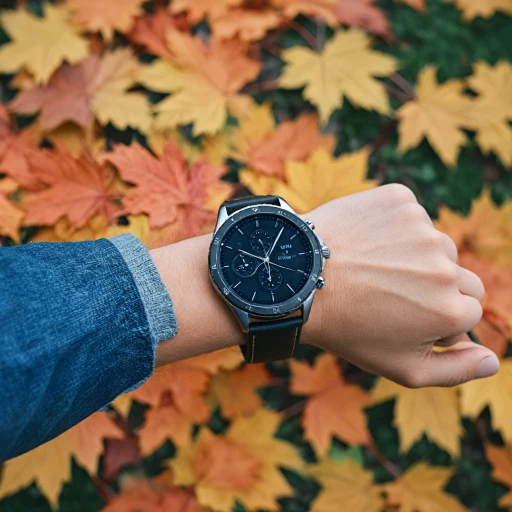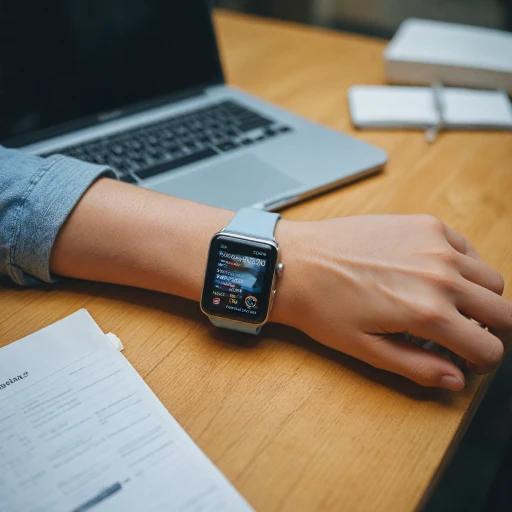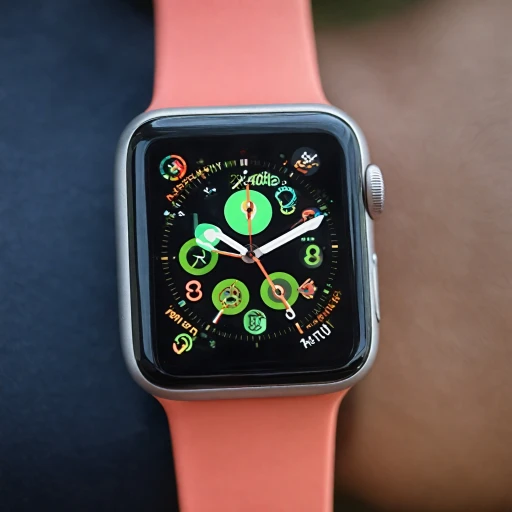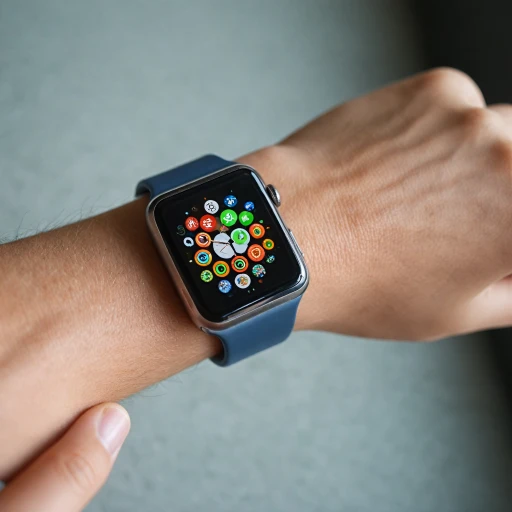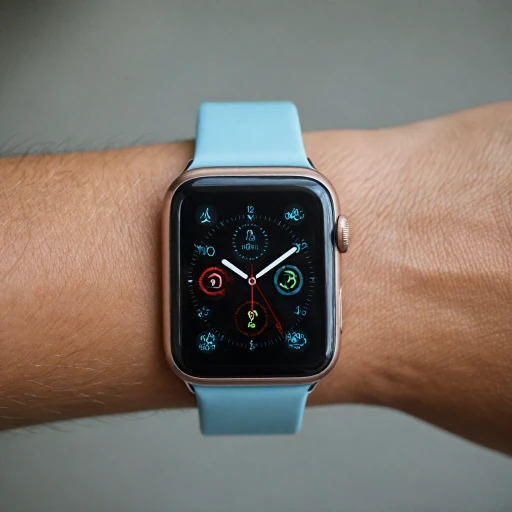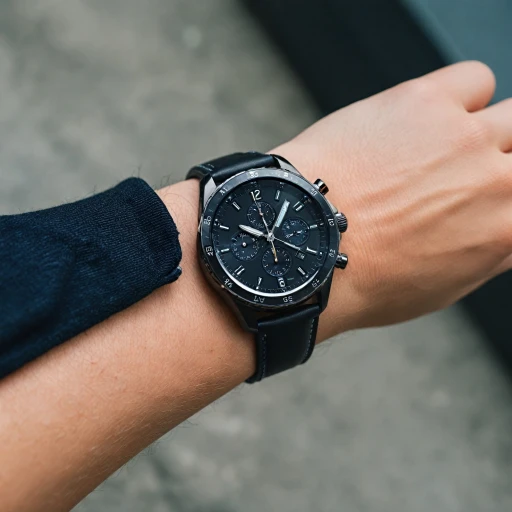
Understanding the Apple ring concept
Envisioning a New Era of Wearables
The concept of the Apple ring stems from a visionary approach to wearable technology, seeking to transform the way users interact with their digital world. While traditional smartwatches like the Apple Watch and the Samsung Galaxy Watch have long dominated the landscape, the introduction of rings promises a peculiarly intimate experience through a form factor that is both unique and unobtrusive.Trends in Wearable Innovation
Over the years, the evolution of devices from basic fitness trackers to advanced health monitoring tools has paved the way for more innovative solutions like smart rings. Brands such as Oura have set precedents by offering compact devices that deliver powerful health data, encompassing everything from heart rate to sleep tracking. As wearable enthusiasts will tell you, the convenience of a ring over a wrist-worn device could potentially appeal to users looking for an alternative way to gain insights into their health and fitness. Given the traits and features of existing smart rings, it is anticipated that any ring Apple creates will incorporate an elegant design coupled with robust technology to remain a step ahead in the competitive landscape. Furthermore, rumors surrounding the project suggest that this device might provide sophisticated features—blending wellness tracking capabilities like those found in the best smartwatches with the discreet, always-on presence of a ring.Challenges and Opportunities in Form Factor
The ideal smart ring must strike a balance between size, functionality, and energy efficiency, which presents its share of challenges. Battery life is a significant aspect to consider, as a ring, unlike a traditional watch, offers limited space for larger power sources. Furthermore, the ring will need to seamlessly integrate with platforms like Apple Health and Samsung Health, providing users with a streamlined experience that supports comprehensive health tracking. The potential for such a device lies not just in health and fitness applications but also in everyday usability, such as seamless payment systems or connectivity with other Apple devices like the Vision Pro. As we explore the market dynamics further, it will be crucial to assess how Apple sets its ring apart from existing innovations in smart rings and the broader spectrum of wearable technology. For a more detailed comparison between potential Apple innovations and existing devices, check out this comprehensive guide which highlights where the new technology might fit within current product offerings.The evolution of wearable technology
From Early Steps to Advanced Integrations
The journey of wearable technology has transformed significantly, with smartwatches playing a pivotal role. When we talk about the evolution in this domain, the discourse frequently brings to light various aspects, from fitness and heart rate monitoring to more complex health data tracking. Apple’s ventures, which once primarily centered around the Apple Watch, have paved the way for other innovations such as the much-anticipated Apple ring. Smartwatches, like the Samsung Galaxy and Apple Watch, were initially introduced as extensions of smartphones, offering notifications and basic health tracking. But as the market matured, these devices integrated advanced features like sleep and heart rate monitoring, challenging the notion of traditional digital devices. Fitness enthusiasts and tech aficionados found themselves gravitating towards devices that offered more than just notifications.Smart Rings in the Spotlight
Recently, the concept of smart rings, such as the Oura ring, has entered the spotlight, expanding the wearable tech landscape. These compact devices promise to deliver health tracking features traditionally associated with bulkier devices. Their appeal lies in the promise of convenience and discretion without compromising on functionality. Users are eager to invest in devices that fit seamlessly into their lifestyle while providing comprehensive insights into their health routines. The health-tracking features of smart rings and watches encompass a range of metrics including fitness data, sleep cycles, and heart health. It’s essential for emerging devices like the Apple ring to match or enhance these capabilities to capture the market effectively. Innovations in battery life and data accuracy will further determine the appeal and adoption among users. For a detailed comparison of traditional smartwatches like the Apple Watch and other modern rings, refer to this comprehensive guide. Understanding these advancements provides valuable insights into how current trends could shape the functionalities of future wearables such as the Apple ring.Market speculation and expert predictions
Anticipating the Future Market Landscape
In the realm of wearable technology, the buzz around the Apple ring's potential release has created a wave of speculation among tech enthusiasts and market analysts. With Apple's history of reshaping product categories, the introduction of an Apple ring could signify a notable shift in how we approach smart devices beyond our wrists. Apple's foray into this space would inevitably draw comparisons to well-established products such as the Apple Watch, known for its comprehensive health tracking features. Additionally, the Oura ring and Samsung Galaxy smart rings have set high benchmarks with their advanced sleep and fitness tracking capabilities. Each offers a unique approach to gathering health data, but the Apple ring, if released, may attempt to amalgamate these functions in a way that aligns with Apple's ecosystem philosophy. Beyond direct competitors, the market speculation often veers into the trends and consumer demands driving the expansion of smart rings and similar devices. The possibility of sleek design, improved battery life, and enhanced heart rate monitoring could attract not only existing watch users but also those eager for the latest innovations in wearable tech. Moreover, industry experts frequently discuss potential integration opportunities with other Apple products, such as the Vision Pro, thereby crafting a coherent and interconnected user experience that leverages Apple's ecosystem strength. As these discussions unfold, rumors persist about features that could potentially define the Apple ring as the best smart ring option, including advanced data tracking and user-friendly interfaces. The market awaits with bated breath, driven by both curiosity and expectation. Should the Apple ring meet its anticipated release date, it may well redefine what consumers expect from wearable technology. For those keen on exploring the current offerings in wearable tech, our guide to the perfect smartwatch for women provides insights into the existing landscape and helps in making informed choices. Overall, the arrival of the Apple ring could be a groundbreaking development in the field of smart rings, positioning Apple to once again lead the charge in technological innovation.Comparing the Apple ring with existing smartwatches
Exploring Key Differences Between the Apple Ring and Smartwatches
The introduction of the Apple ring has sparked considerable interest, especially when compared to established devices like smartwatches from Apple, Samsung, and fitness-focused brands. Understanding these differences can help consumers make informed choices when considering their next wearable technology purchase. Smartwatches such as the Apple Watch and Samsung Galaxy Watch have long been favored for their comprehensive functionality. They come equipped with robust health tracking features, including heart rate monitoring, fitness tracking, and sleep tracking capabilities. Enhanced over time, these devices have evolved to offer not only fitness-related metrics but also app experiences akin to those found on smartphones. In contrast, smart rings like the prospective Apple ring and existing devices like the Oura ring focus on offering a more minimalist experience. They are designed to be less obtrusive while still delivering core tracking functionalities. For users prioritizing discretion in wearable technology, the Apple ring might present an attractive alternative, providing essential health data such as sleep patterns and heart rate in a subtle form factor. One of the potential challenges faced by smart rings is battery life. With their compact size, balancing performance with long-lasting battery life remains crucial. Smartwatches generally offer the advantage of larger displays and enhanced battery capacity, facilitating extended usage without frequent charging. When assessing these devices, it's essential to consider the unique user experience each offers. Smartwatches appeal to users seeking an expanded range of features that support communication, navigation, and even entertainment. Meanwhile, smart rings promise a seamless blend of functionality and style, catering to users focused on health tracking and simplicity. As the release date for the Apple ring approaches, consumers will naturally be curious about how it stacks up against existing solutions. Whether prioritizing comprehensive app integration or subtle health-focused tracking, understanding these differences is key to selecting the device that best meets individual needs and lifestyle.Potential challenges and opportunities
Challenges and Opportunities with the Apple Ring
The Apple ring, still a topic of speculation, faces both challenges and opportunities as it considers entering the flourishing world of smart rings. As companies like Oura have already set high standards in health tracking, Apple must be cautious and strategic.
One of the significant challenges will be matching the extensive features found in existing smartwatches like the Apple Watch or Samsung Galaxy watch. From fitness tracking to heart rate monitoring, these devices have set a competitive benchmark.
- Health Tracking: The integration of health-related features such as sleep and heart rate tracking is crucial for success. The device's accuracy in capturing data will determine its reliability among users.
- Battery Life: Ensuring a longer battery life than current competitors could become a differentiating factor for the Apple ring. It needs to surpass existing smart rings to draw attention.
- Design and Comfort: The Apple ring must aim for a balance between a fashionable design and comfort, factors that are significant determining aspects for wearable devices.
Opportunities for the Apple ring exist due to Apple's existing ecosystem and brand loyalty, which could ease its integration into daily life, paving the path for smart rings to become mainstream. Examining how it compares with current devices, from fitness tracking features to its role in the health tech industry, will be crucial for its success.
Furthermore, Apple's focus on privacy and security can bring a competitive edge in handling sensitive health data, which is a major concern for users. Strategically addressing these challenges and leveraging opportunities could help Apple not only capture the market but also revolutionize it with their innovative vision.
